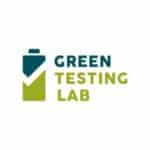Key Players in Battery Testing & Analysis

4a engineering GmbH
4a engineering GmbH (Traboch, Austria) provides material characterization, battery abuse testing and multiphysics simulation. Test systems (IMPETUS®, LINOVIS®, HERCULES TR) and VALIMAT® software create validated digital twins for EV, ESS and industrial applications.

About:Energy
About:Energy is a London-based technology company founded in 2021, specializing in advanced battery data, modeling tools, and simulations. Serving industries like automotive and aerospace, it provides precise insights to enhance battery design, performance, and cost-efficiency, driving innovation in energy storage systems.

AccelionTech
AccelionTech, based in Munich, uses advanced AI to enhance battery manufacturing. Its platform integrates real-time prediction, closed-loop control, and multimodal data to boost efficiency, reduce waste, and accelerate production.

ACCRETECH (Europe) GmbH
ACCRETECH (Europe) GmbH, founded in Munich in 1989, delivers precision industrial measuring, semiconductor system solutions, and battery testing equipment. Its quality assurance systems aligned with Industry 4.0 boost performance and cut energy use.

ACCURE Battery Intelligence
ACCURE Battery Intelligence, founded in 2020 in Aachen, Germany, specializes in predictive analytics for lithium-ion batteries. Their advanced software monitors and optimizes battery performance and safety across sectors like electric vehicles and energy storage, enhancing efficiency and extending battery life through real-time data analysis and digital twin technology.

Akkuracy Battery Testing
Akkuracy Battery Testing, based in Munich, specializes in battery safety and thermal runaway evaluation. Offering comprehensive cell and module testing alongside advanced calorimetry and gas analysis, they provide precise, reproducible solutions to enhance battery performance and safety for the battery technology industry.

ANDRITZ AG
ANDRITZ AG is a global engineering partner providing advanced solutions for battery manufacturing and recycling, covering the entire value chain from cell production to end-of-life processes. Their high-speed, modular, and fully automated equipment supports safe, efficient, and scalable battery production for lithium-ion and other chemistries.

Anton Paar
Anton Paar (founded 1922, Graz, Austria) supplies high-precision analytical and process instruments—density meters, rheometers, spectroscopy, particle sizing—and automation for battery materials R&D, production control, and energy storage.

Aqrose Technology
Aqrose Technology, established in Beijing in 2017, employs advanced AI and machine vision to automate quality inspection and defect detection. Its innovative solutions ensure precision in EV battery production, automotive, and electronics manufacturing.

Arbin Instruments
Arbin Instruments leads in the design and manufacture of high-precision battery and energy storage test equipment. Their state-of-the-art instrumentation and smart software empower global research, quality control, and industrial production with unmatched accuracy.

Astrolabe Analytics
Astrolabe Analytics, a Seattle-based firm founded in 2017, advances battery innovation with data-driven software and predictive analytics. Serving electric vehicles, drones, energy storage, and electric aviation, they enhance battery safety, performance, and efficiency through automated data management solutions.

AVILOO Battery Diagnostics
Founded in 2017 and based in Wiener Neudorf, AVILOO Battery Diagnostics specializes in advanced diagnostics for lithium-ion EV and hybrid batteries. Using proprietary tools like AVILOO BOX and PREMIUM Test, they provide accurate health assessments for automotive, industrial, and stationary applications, promoting safety and sustainability.

AVL List GmbH
AVL List GmbH, based in Graz, Austria, provides simulation, testing, and engineering for powertrains, batteries, hydrogen systems, and automated driving. The company serves OEMs and suppliers with lab services, digital twins, and testbed solutions to improve safety, performance, and manufacturability.

Batalyse
Batalyse GmbH, based in Walzbachtal, Germany, provides advanced data processing software for the electrochemistry sector, specializing in batteries and fuel cells. Founded in 2021 as a Fraunhofer ICT spin-off, their modular platform automates data collection, analysis, and management, enhancing efficiency and supporting sustainable energy solutions.

BatterieIngenieure GmbH
BatterieIngenieure GmbH, founded in 2015 in Aachen, Germany, specializes in testing, development, and consulting for electrochemical energy storage systems. Acquired by UL Solutions in 2024, they provide expertise in battery technologies for electric vehicles, energy storage, and maritime applications, ensuring quality and safety through certified processes.

BatterMachine
BatterMachine, founded in November 2023 and based in Seoul and Shenzhen, specializes in machine learning solutions for battery management. Their BatMF framework accurately estimates battery states like SOC, SOH, and RUL, enhancing energy storage efficiency and longevity across automotive, energy, and industrial sectors.

Battery Dynamics GmbH
Battery Dynamics GmbH, based in Garching bei München, Germany, specializes in high-precision lithium-ion battery testing solutions. Founded in 2018 by Dr. Peter Keil, the company supports automotive and renewable energy industries by optimizing battery performance and lifespan through advanced technologies and expert services.

BattGenie Inc.
BattGenie Inc., based in Seattle since 2017, develops advanced software-driven battery management solutions for lithium-ion batteries used in electric vehicles, consumer electronics, and grid storage. Leveraging physics-based models, their technology enhances battery efficiency, safety, and lifespan, improving cycle life by over 100% without additional hardware.

Battronics
Battronics, founded in 2017 and based in Zurich, specializes in lithium-ion battery technologies. Offering expertise in battery modeling, aging prediction, and supply chain optimization, it supports electric vehicles and renewable energy sectors. Battronics provides strategic consulting to advance sustainable energy storage solutions.

Bib batteries
Bib Batteries, founded in Paris in 2021, specializes in sustainable EV battery management throughout their lifecycle. Leveraging an AI-powered platform, they provide real-time monitoring, repair, reuse, and recycling solutions for EV fleets, enhancing performance and reducing environmental impact.

BioLogic
BioLogic, headquartered in France, has over 40 years of expertise in manufacturing high-precision electrochemical instruments. Serving academic and industrial sectors globally, they offer potentiostats, battery cyclers, and impedance analyzers for applications in energy storage, life sciences, and materials science. Known for accuracy and modular design, BioLogic supports innovation with reliable tools and dedicated customer service.

Bitrode Corporation
Bitrode Corporation, headquartered in St. Louis since 1957, specializes in energy storage solutions and advanced battery testing equipment. Serving global markets in electric vehicles, renewable energy, and industrial storage, Bitrode offers innovative systems like the Digital Cycler™ and VisuaLCN 7.0 software to ensure battery performance and reliability.

BMSer Technology
BMSer Technology, operating as Hangzhou Xieneng Technology Co., Ltd., pioneers advanced battery and energy management systems. Its proprietary technology fuels grid-scale storage, electric vehicles, and microgrid solutions worldwide.

Brill Power
Brill Power, founded in 2016 in Oxford, specializes in advanced battery management and energy storage solutions. Their Battery Intelligence Platform enhances performance, extends battery life by up to 60%, and reduces costs. Serving both stationary systems and electric vehicles, they offer innovative BMaaS and collaborate with key industry partners.

Byterat (now Ohm)
Byterat, based in Palo Alto since 2021, provides a specialized data management platform for battery research. Leveraging advanced analytics and machine learning, it transforms complex testing data into actionable insights, offering continuous access and predictive modeling to optimize battery development processes.

Cellect Energy
Cellect Energy, based in Barcelona, specializes in utility-scale energy storage solutions. Through its Cellect Platform, Box, and Control systems, it optimizes battery performance with advanced analytics and secure management. Partnering with Green Flexibility and Volkswagen, Cellect Energy supports the renewable energy transition.

CeLLife Technologies Ltd.
CeLLife Technologies Ltd., a Finnish deep-tech spin-off from Tampere University, revolutionizes battery manufacturing with its AI-powered Electrical Fingerprint Platform. The solution delivers rapid diagnostics, predicts cell degradation, and optimizes lifespan sustainably.

Circunomics
Circunomics GmbH, based in Mainz, Germany, specializes in lithium-ion battery lifecycle management via a B2B marketplace. Leveraging AI and digital twin technology, they optimize battery reuse and recycling for electric mobility. In 2023, they managed over 200 MWh in trades and secured €8 M in Series A funding for international expansion.

Cleantron Cleantech Batteries
Cleantron is a Netherlands-based manufacturer of modular lithium-ion battery modules and packs, offering swappable CLP modules, ISO-aligned BMS, and custom battery systems for e-mobility, AGVs, construction and agricultural equipment.

Cognition Energy
Cognition Energy Ltd., founded in 2018 in the UK, excels in battery cell testing and equipment innovation. With its cutting-edge CellPod system, the company enhances battery safety, quality, and performance.

Coulomb AI
Coulomb AI, based in San Francisco, specializes in advanced battery management using AI and data analytics. Their Battery Observability Platform and Health Assessment tools enhance battery performance, longevity, and safety for manufacturers, automotive OEMs, and fleet operators.

Crino
Crino is a Munich-based German tech firm offering hardware and software solutions for non-destructive lithium-ion battery cell analysis. Their AI-driven systems boost R&D, manufacturing and quality assurance.

CT-Lab Stuttgart
CT-Lab Stuttgart is a specialized facility in Germany offering advanced computed tomography solutions for industrial testing, metrology, and battery analysis. Its high-resolution 3D/2D imaging drives quality and performance insights.

DEKRA
Established in 1925, DEKRA is a global leader in independent inspection, testing, and certification services. Its advanced battery evaluations and digital solutions drive safety, compliance, and sustainable innovation worldwide.

Digatron Power Electronics
Digatron Power Electronics, based in Aachen, Germany, provides advanced systems for battery production, testing, and formation. With five decades of expertise, its equipment supports chemistries for automotive and energy storage applications.

Eatron Technologies
Eatron Technologies, founded in 2018 in Warwick, UK, develops AI-driven battery management software for electric vehicles and energy storage systems. Their Intelligent Software Layer optimizes battery performance, safety, and longevity by integrating with OEM BMS. Key partnerships include Infineon and Oshkosh, supported by investors like LG Technology Ventures.

Electra Vehicles Inc.
Electra Vehicles Inc., founded in 2015 and headquartered in Boston, specializes in AI-driven battery optimization for electric vehicles and energy storage systems. Their EVE-AI™ platform enhances battery performance, extends lifespan, and improves safety, serving manufacturers, fleet operators, and producers globally.

Elysia – Battery Intelligence from Fortescue
Elysia, part of Fortescue and evolved from WAE, offers embedded BMS algorithms and a Snowflake-based cloud analytics platform that deliver predictive diagnostics, through-life monitoring, faster charging, and up to ~30% longer usable battery life across automotive, mining, and energy storage.

EnergyCortex GmbH
EnergyCortex GmbH, based in Aachen, Germany, delivers intelligent cloud-based solutions that optimize industrial energy processes and battery storage systems. Utilizing data science and advanced algorithms, they enhance efficiency, integrate renewable energy, and reduce emissions for energy suppliers and industrial clients.

ENTROVIEW
ENTROVIEW transforms battery diagnostics using patented entropy analysis for real-time, lab-grade SoC and SoH assessments. Their innovative technology cuts testing from days to minutes, enhancing performance for EVs, gigafactories, and recycling.

Exponent
Exponent, Inc. is a global leader in science and engineering consulting, tackling complex challenges with multidisciplinary expertise. Their innovative approach spans battery technology, AI integration, and risk mitigation.

Festo
Festo, a global automation leader since 1925, delivers advanced pneumatic and electric drive solutions integrated with precision sensor technologies. Its innovations streamline battery manufacturing and diverse industrial processes worldwide.

FlowCellutions
FlowCellutions specializes in state-of-health diagnostics for flow batteries, leveraging electrochemistry, precision sensing, and machine learning to enhance performance and sustainability. Their innovative solutions reduce industrial carbon emissions and optimize energy storage systems.

Generational
Generational, a leader in automotive technology, certifies pre-owned EV battery health and real-world range through advanced OBD diagnostics. By providing clear insights, it boosts buyer confidence and empowers retailers with verified data.

Glimpse
Glimpse Engineering, founded in 2023 in Somerville, MA, offers advanced X-ray CT scanning for battery quality monitoring. Their platform delivers real-time insights and defect detection, enhancing manufacturing efficiency and reliability. Glimpse’s technology supports continuous improvement in battery production processes.

Green Testing Lab
Green Testing Lab is an Austria-based high-tech laboratory providing advanced battery test rigs and custom testing services. Specializing in safety and e-mobility applications, they ensure robust validation and regulatory compliance for battery systems.

Hynn Technology Europe GmbH
Founded in 2022 in Heidelberg, Hynn Technology Europe GmbH, a HYNN subsidiary, delivers advanced battery post-processing solutions—including formation, capacity grading, and precision testing—for electric vehicles, renewable energy, and electronics. They play a pivotal role in Europe’s battery manufacturing ecosystem.

INGUN Group
INGUN Group, founded in 1971 and based in Constance, Germany, supplies high-precision test probes, adapters and contact pins for automotive, e-mobility, telecom, medical, aerospace and energy sectors. Known for high-current, fine-pitch and modular contacting solutions.

INNER
INNER provides machine‑learning X‑ray/CT diagnostics for EV battery packs, scanning assembled modules at ~50‑micron precision to detect cracks, leaks, torn wires, and swelling. Fast, non‑destructive reports support production QA, warranty decisions, second‑life screening, and recycling.

Intertek
Intertek is a global leader in testing, inspection, certification, and advisory services. With robust expertise in battery and energy storage technologies, the company drives safety, compliance, and risk mitigation worldwide.

Keysight Technologies
Keysight Technologies is a leading American provider of electronic design, test and measurement solutions. Founded in 2014, it drives innovation across sectors including communications, aerospace, defense, and advanced battery testing applications.

LABCO GmbH
LABCO GmbH is an independent accredited test laboratory in Germany specializing in rigorous evaluations of vehicle components, batteries and appliances. With 20+ years of experience and testing facilities, LABCO ensures unbiased global compliance.

LIMATICA
LIMATICA, based in Chemnitz, Germany, specializes in battery cell optimization and safety using advanced noise analysis technology. Their innovative solutions enhance battery manufacturing by improving quality assessment, reducing costs, and optimizing performance for both production and recycling applications.

Liminal
Liminal Insights Inc., founded in 2015 by Princeton technologists, develops advanced ultrasound and machine learning solutions for battery manufacturing. Their EchoStat® system enhances cell quality, efficiency, and safety, supporting scalable electric vehicle battery production.

MARPOSS
MARPOSS S.p.A is a global leader in precision measurement, inspection, and testing solutions with over 70 years of expertise. Its advanced systems, including battery testing and automated assembly, ensure high quality manufacturing.

Micantis
Micantis, Inc is a Boulder-based technology company specializing in battery testing analytics and data management. Their advanced software platform automates the processing of diverse test data, ensuring rapid validation, safety monitoring, and quality assurance across sectors like EVs, aviation, and industrial applications.

MICRO-EPSILON Messtechnik
MICRO-EPSILON Messtechnik (est. 1968, Ortenburg, Germany) provides high-precision non-contact sensors and inline measurement systems with submicron accuracy, high sampling rates and Industry 4.0 connectivity for battery, automotive, semiconductor and medical manufacturing.

Monolith
Monolith AI, based in London, develops AI-driven software to accelerate engineering product validation. Specializing in electric vehicle battery validation, their platform leverages machine learning for data analysis and predictive modeling, enhancing testing efficiency and quality across automotive, aerospace, and manufacturing sectors.

Neware Technology Limited
Neware Technology Limited, established in 1998 in Shenzhen, China, is a leading global provider of battery testing systems and laboratory instruments. They deliver high-precision cyclers, automation solutions, and advanced testing technologies for diverse battery applications.

Nextomation
Nextomation, based in Poland, specializes in designing and implementing Industry 4.0 turnkey automation systems. With advanced software and controls, the company supports battery, e-mobility and industrial production worldwide.

Ohm (formerly Byterat)
Ohm, formerly Byterat, is a San Francisco-based company founded in 2023 that leverages AI and machine learning to transform battery research and manufacturing. Its platform delivers real-time data analytics and predictive insights.

PEM Motion
Founded in 2014, PEM Motion is a German engineering and consulting firm specializing in e-mobility. With over 65 employees, they develop battery and electric motor solutions for more than 600 global clients. Their divisions include research, consulting, powertrain development, and educational programs.

PowerUp
Founded in 2017 in Paris, PowerUp provides advanced analytics for lithium-ion batteries. Their Battery Insight® platform uses AI and machine learning to monitor health, predict performance, and enhance safety across energy storage, electric mobility, and backup power sectors.
Precision-Co.-Ltd._logo-150x150.jpg)
Royma Tech
Royma Tech (Suzhou) Precision Co., Ltd. designs industrial X‑ray and 3D CT inspection systems for nondestructive testing. Its automated inline CT platforms provide micron‑level defect detection for batteries, semiconductors, automotive, and electronics manufacturing.

SAFION GmbH
Safion GmbH, based in Aachen, Germany, specializes in advanced battery diagnostics using electrochemical impedance spectroscopy. Founded in 2019 by RWTH Aachen engineers, Safion offers solutions for quality assurance, lifespan forecasting, and battery assessment across the entire battery value chain.

Scantech
Scantech (est. 1992, France) supplies inline non-contact measurement systems using low-energy X-ray, laser, IR and microwave sensors for thickness, coat weight, density and defect control across battery, foil and film production—enabling real-time process control and reduced scrap.

Sention Technologies Limited
Sention Technologies Limited, based in London, develops diagnostics for lithium-ion batteries. Leveraging proprietary acoustic imaging and AI-driven analytics, the company delivers non-contact, real-time insights to enhance performance and safety.

SERMA Technologies
SERMA Technologies, a French expert in electronic and battery analysis, provides consulting, testing, and simulation services that support R&D and manufacturing. Serving aerospace, automotive, and energy sectors, it drives innovation in electrification.

SGS
SGS, a global leader in testing, inspection, and certification, leverages 145+ years of expertise to provide comprehensive battery testing, compliance services, and performance analysis, ensuring safety and quality across diverse industries.

Sinexcel-RE
Sinexcel-RE delivers advanced battery testing equipment and solutions for energy storage and electric vehicles. The company pioneers precise measurement and control systems, ensuring safety and efficiency in global applications.

Sphere Energy
Sphere Energy, headquartered in Germany, specializes in advanced battery technology services, including testing equipment, data analytics, and advisory support. Focusing on solid-state batteries and data-driven solutions, they serve industries such as automotive, aerospace, and consumer electronics. Their innovative “Batty” AI simulation system accelerates battery development, enhancing performance and sustainability.

Stat Peel AG
Stat Peel AG (Glarus, Switzerland) provides wearable and stationary detectors using Raman spectroscopy for material‑selective monitoring of airborne nanomaterials (CNTs, graphene, nanocellulose, metal oxides). Systems support labs, R&D, battery manufacturing and recycling to manage worker exposure and compliance.

Stöbich technology GmbH
Stöbich technology GmbH, based in Goslar, Germany, delivers advanced fire protection and safety solutions for lithium‐ion batteries and energy storage systems. With a heritage in structural fire protection, the company offers rigorous testing, certification, and comprehensive risk mitigation services.

suena
Founded in 2021 in Hamburg, Suena GmbH specializes in advanced software for optimizing energy trading in battery storage and renewable systems. Their Autopilot platform uses real-time data and predictive analytics to enhance profitability and support sustainable energy across multiple markets.

TA Instruments
TA Instruments, a Waters Corporation subsidiary since 1996, is a leading provider of precision analytical instruments for thermal analysis, rheology, and mechanical testing. Serving global industries, they advance pharmaceuticals, materials science, and battery technology through innovative solutions and exceptional support.

TEESMAT
TEESMAT, based in Grenoble and funded by EU Horizon 2020, is a collaborative platform offering advanced characterization techniques for electrochemical energy storage materials. It supports researchers and industries in developing and enhancing lithium-ion and emerging battery technologies.

The Battery Innovation Center
The Battery Innovation Center (BIC) in Indiana is a premier non-profit hub for battery research and commercialization. Offering advanced fabrication, testing, and certification services, BIC supports over 400 clients across commercial, academic, and defense sectors, driving innovation in energy storage and microgrid technologies.

Thermo Fisher Scientific
Thermo Fisher Scientific is a global leader offering cutting-edge analytical instruments, consumables, and services that empower scientific research, clinical diagnostics, and advanced battery technology applications.

Titan Advanced Energy Solutions
Titan Advanced Energy Solutions, based in Salem, MA, offers advanced ultrasound-based battery cell inspection systems. Their IonSight™ technology provides non-destructive diagnostics, enhancing battery safety, performance, and manufacturing efficiency for electric vehicles, storage systems, and consumer electronics.

TÜV SÜD Battery Testing GmbH
TÜV SÜD Battery Testing GmbH, based in Garching, Germany, is a leading division of TÜV SÜD specializing in lithium-ion battery testing and certification for automotive and energy storage industries. Accredited by DAkkS, they ensure safety, performance, and regulatory compliance throughout the battery lifecycle.

TWAICE
TWAICE Technologies, based in Munich, delivers AI-driven battery analytics for electric vehicles, energy storage, and manufacturing. Their advanced platform optimizes battery performance, extends lifespans, and reduces costs, supporting sustainable energy transitions.

UL Solutions
UL Solutions is a global safety science organization that delivers testing, certification, advisory, and software solutions to ensure product safety, sustainability, and regulatory compliance. Their battery expertise spans the entire lifecycle.

Voltaiq
Established in 2012 in Berkeley, Voltaiq delivers advanced battery intelligence and analytics software. Their Enterprise Battery Intelligence platform automates data collection and analysis, enhancing battery development, manufacturing, and maintenance. Voltaiq partners with industry leaders to improve production efficiency and reliability.

Voltavision GmbH
Voltavision GmbH, established in 2011 in Bochum, Germany, specializes in testing high-voltage battery systems and energy storage. Leveraging modern facilities and tailored test equipment, it ensures safety, efficiency, and industry compliance.

Xiamen Acey New Energy Technology
Xiamen Acey New Energy Technology Co., Ltd. (ACEY) is a high-tech firm in Xiamen, China, specializing in advanced lithium-ion battery production equipment. Their precision machinery enhances EV, ESS, and consumer manufacturing processes.

Zhejiang Hangke Technology
Hangke Technology, established in Hangzhou in 1984, is a global leader in post‐processing systems for lithium-ion batteries. Its intelligent factory solutions enhance production quality for battery and automotive sectors worldwide.
Battery Testing & Analysis
Battery testing is the systematic process of evaluating a battery’s performance, safety, health, and lifespan. This verification is essential across the entire product lifecycle, from initial research and development to manufacturing quality control and in-field operation. Its importance has grown significantly with the expansion of electric vehicles (EVs), renewable energy storage, and the universal reliance on portable electronics.
Testing extends beyond the physical battery cell itself to include how software and applications impact power consumption. In an environment where device uptime is critical, effective battery testing ensures that products are not only safe and reliable but also meet user expectations for longevity and efficiency, delivering a positive user experience and a distinct market advantage.
Key characteristics of the technology
The primary objectives of battery testing are to provide a clear and data-driven understanding of a battery’s capabilities and limitations. Its key characteristics are centered on validation and optimization.
- Safety Assurance: A principal function of battery testing is to identify and mitigate potential hazards. This involves subjecting batteries to stress conditions to detect risks like thermal runaway, preventing equipment damage or personal injury.
- Performance Optimization: Testing confirms that a battery meets its design specifications for capacity, power delivery, and efficiency. For software, this involves fine-tuning code and configurations to minimize power drain and improve operational performance.
- Longevity Assessment: By simulating charge and discharge cycles and monitoring degradation, testing procedures can predict a battery’s operational lifespan. This allows for proactive maintenance planning and informs consumers about long-term product reliability.
- User Satisfaction and Retention: For consumer devices, battery life is a defining feature. Testing how applications consume power helps developers create products that do not frustrate users with rapid battery drain, leading to better reviews and higher retention.
- Regulatory Compliance: Battery testing validates that a product adheres to required industry and government standards for safety, transportation, and environmental impact, which is necessary for achieving market access.
Technology classifications / types
Battery testing methodologies are diverse, ranging from simple checks to complex diagnostic procedures. They can be broadly classified based on their purpose and technological sophistication.
- Fundamental Health Checks: These methods provide a quick assessment of a battery’s basic condition. They include Open Circuit Voltage (OCV) testing to measure voltage at rest, Internal Resistance testing to detect degradation, and Conductance testing, a non-invasive way to infer internal health.
- Performance and Capacity Evaluation: These tests measure a battery’s ability to perform its core function. Capacity Testing involves a full discharge to confirm its energy storage against its rating. Load Bank Testing simulates real-world operational demands to check voltage stability and runtime. Rate Capability Testing assesses how a battery performs under different discharge speeds.
- Advanced Diagnostic Techniques: For in-depth analysis, engineers use more sophisticated methods. Electrochemical Impedance Spectroscopy (EIS) applies multiple AC frequencies to analyze a battery’s internal electrochemical state and identify specific degradation mechanisms. Thermal Runaway Analysis is a critical safety test that pushes batteries to their limits to understand failure points.
- Software and System-Level Power Consumption Analysis: This type of testing focuses on the impact of software on a device’s battery. It measures power draw during various activities, such as high CPU/GPU load from gaming, constant network activity, screen usage, and background processes. The goal is to identify inefficient code or features that cause excessive battery drain.
Development and commercialization challenges
Despite its importance, battery testing faces several technical and logistical hurdles that impact its development and application.
- Complexity of Simulation: Replicating authentic end-user behavior for software testing is difficult. Accurately mimicking mixed-use patterns, varying network conditions, and different environmental factors requires sophisticated test setups.
- Reproducibility and Control: Ensuring test results are valid and comparable requires a strictly controlled environment. Factors like ambient temperature, humidity, and network stability must be standardized, which can be challenging to maintain.
- Equipment and Calibration Precision: Advanced testing methods like EIS and Coulomb counting require complex algorithms and highly precise equipment. Improper calibration or interpretation can lead to inaccurate conclusions about battery health and capacity.
- Safety Protocols: High-stress evaluations, such as load testing and abuse testing, carry inherent risks. Executing these tests requires strict safety protocols and specialized facilities to prevent battery damage, fire, or injury.
- Pace of Innovation: The rapid introduction of new battery chemistries, like solid-state, and new system architectures, like 800V platforms in EVs, demands the continuous development of new testing standards, equipment, and methodologies.
Recent developments and examples
- Sinexcel-RE introduced its EV Battery Test System, designed for multifunctional testing of EV batteries. The system features an ultra-fast response time for current switching (5 ms) and a high regenerative efficiency of 95%, making it suitable for demanding R&D and production-line validation.
- UL Solutions opened an Advanced Battery Testing Laboratory in Aachen, Germany, focusing on comprehensive safety and performance testing to help manufacturers meet global compliance standards and estimate battery lifespan through advanced simulation.
















